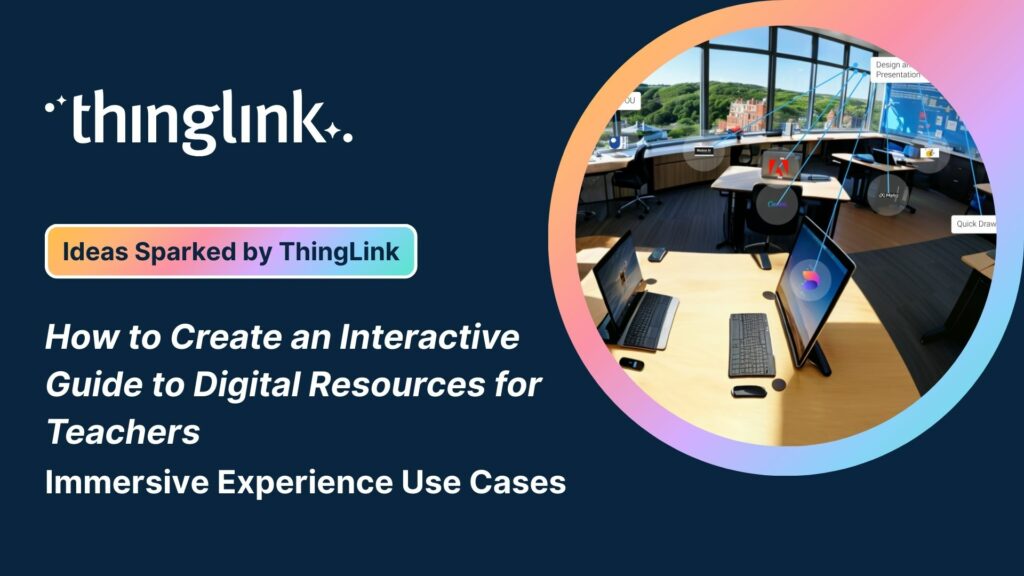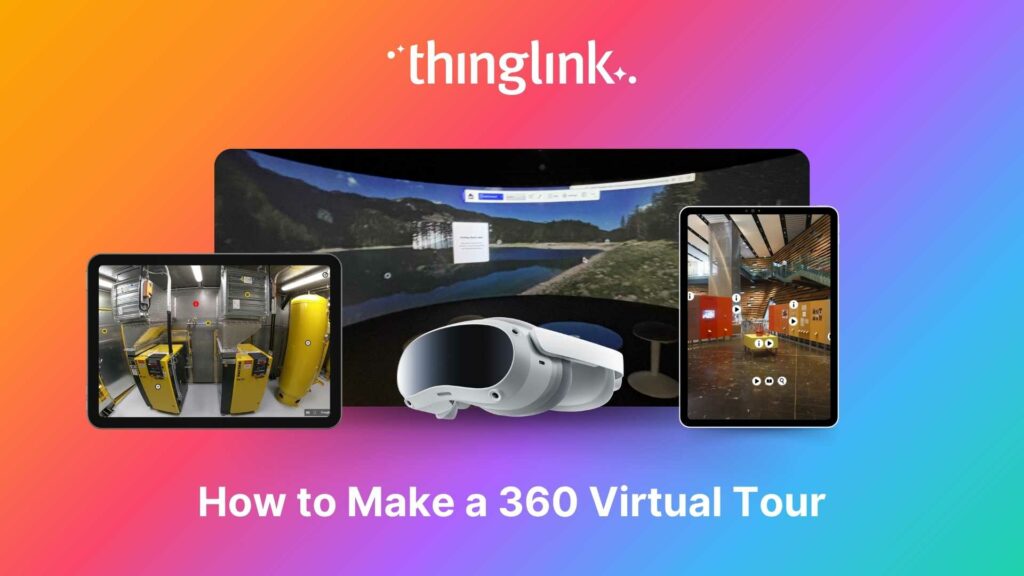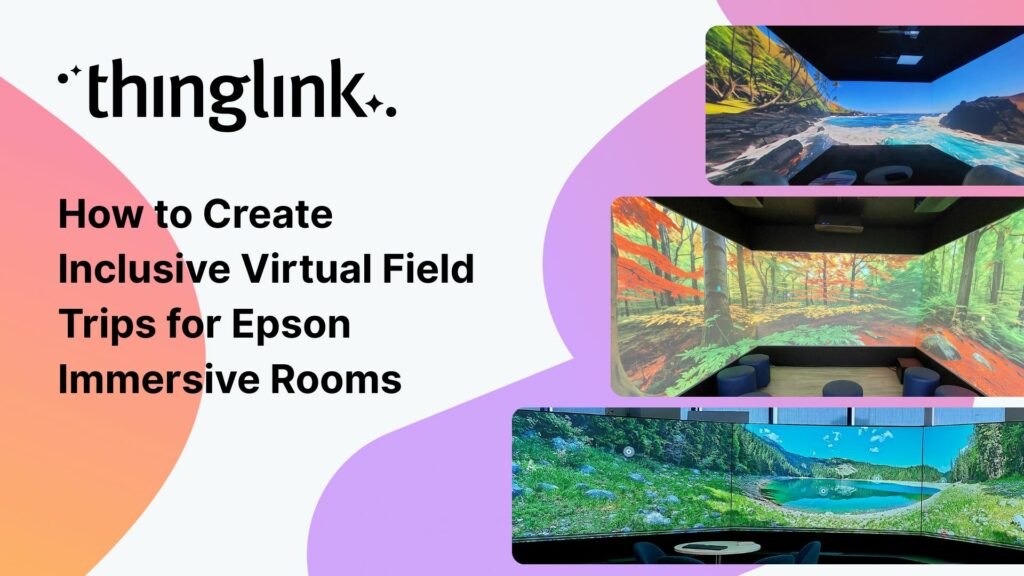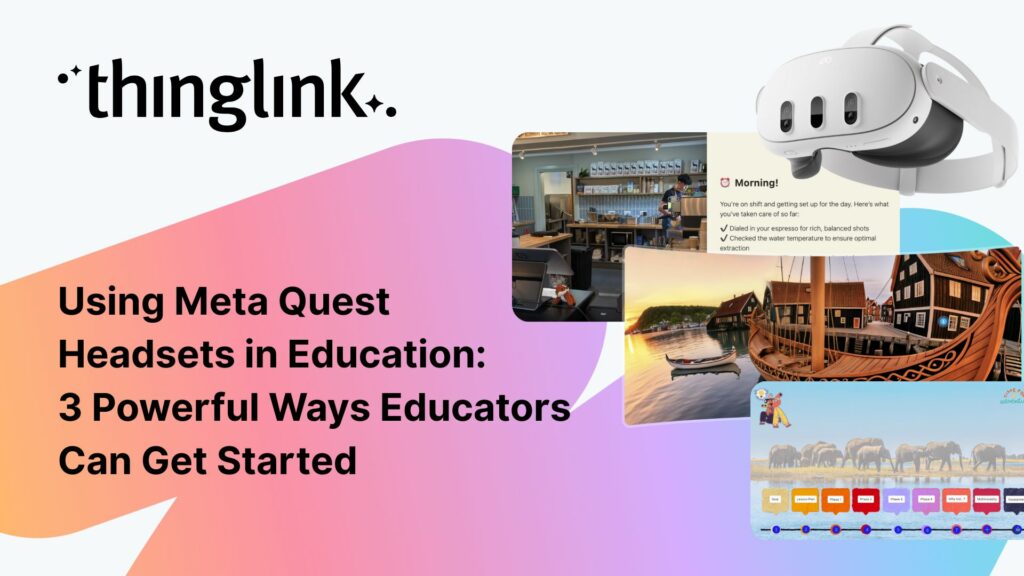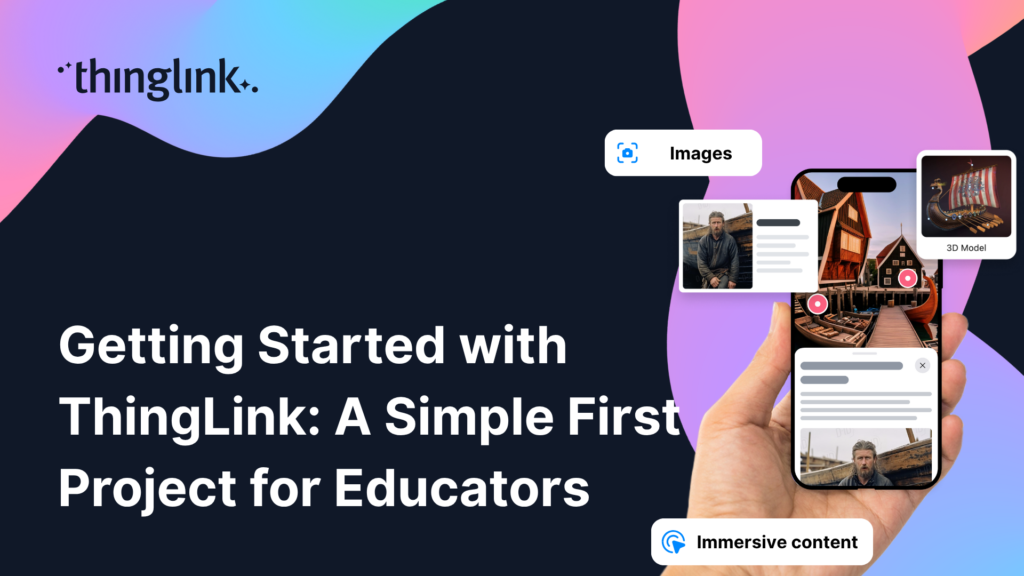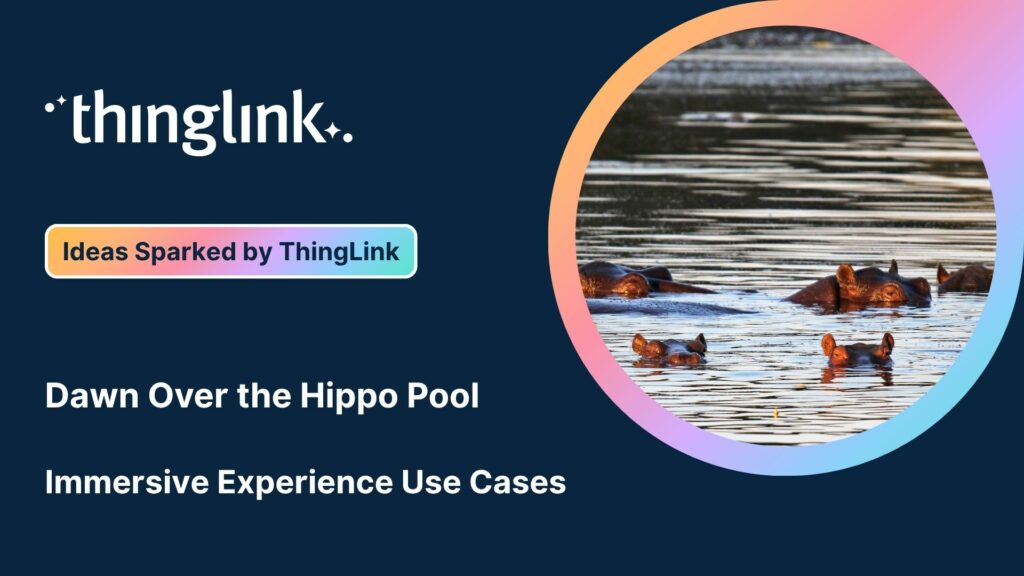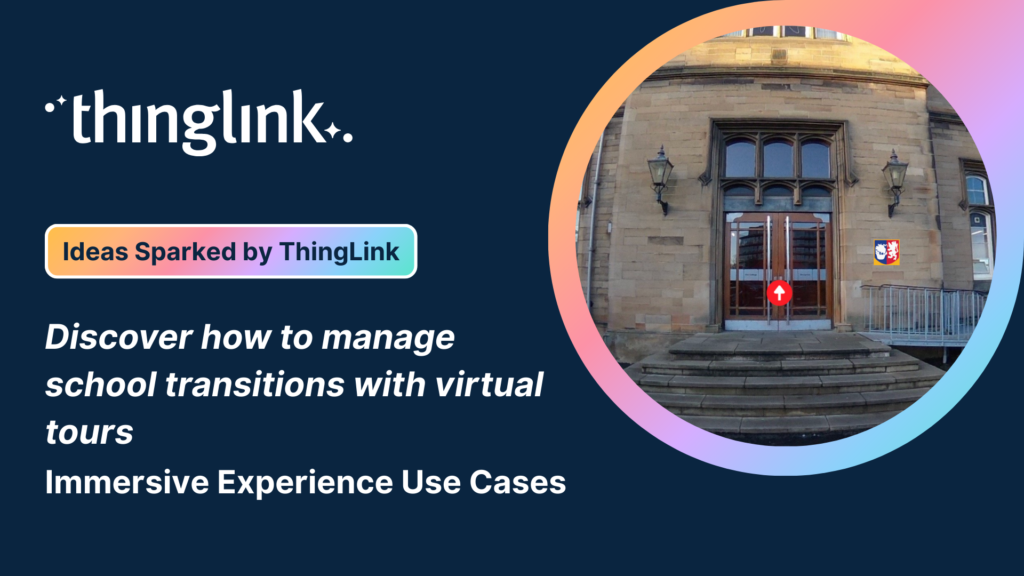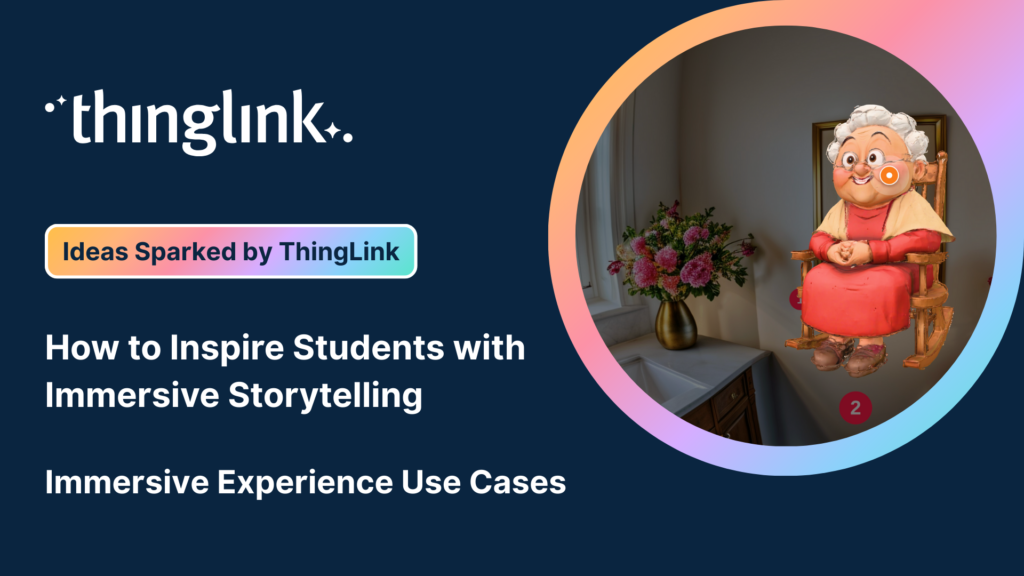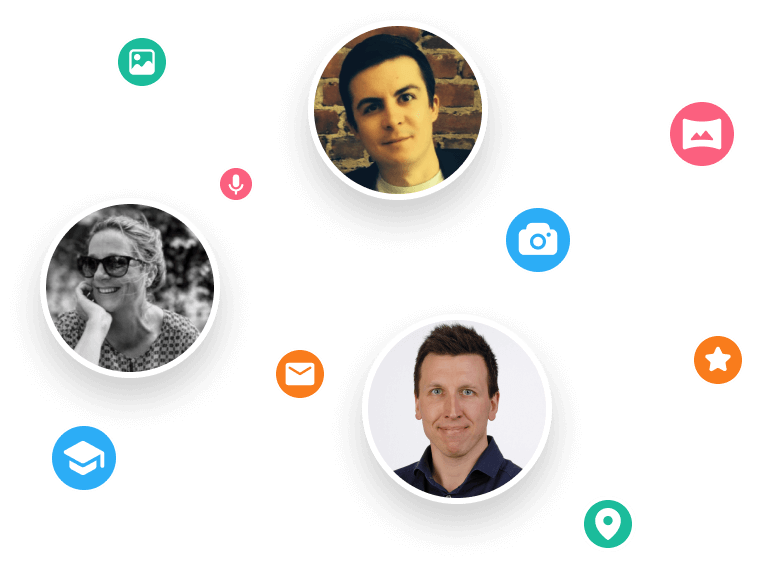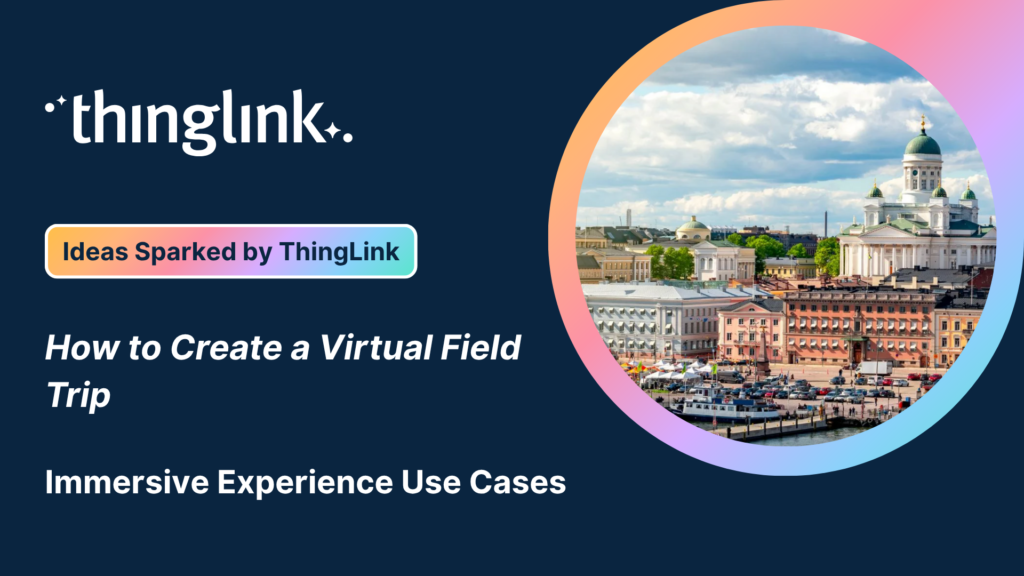
Ideas Sparked by ThingLink! How to Create a Virtual Field Trip
✨ ThingLink Idea Spark: Cultural Experience
Make remote places across the globe accessible for students to explore on their school devices, such as laptops or VR headsets, all from the comfort of the classroom.
During this virtual field trip, students teleport to an iconic part of the city of Helsinki to learn more about its history and culture while connecting their learning to real-world contexts. In this example, a gamified approach to exploring hidden information adds an extra layer of engagement, while additional hotspots and multimedia spark curiosity.
Teleporting to Different Places: Tools and Techniques
This activity was created using captured 360° images, the ThingLink library, and additional multimedia. For missing content, the integrated Unsplash library in ThingLink made it easy to add various 2D images inside the hotspots, while embed tags were used to link maps and video content. Both the cover and conclusion images were designed and adapted in Canva using a template for 2D and this guide to create your own 360° images. These templates are ideal for seamlessly adjusting to different experiences with a consistent thumbnail style, from virtual field trips and learning modules to escape rooms and scenarios.
Experience Title: Virtual Field Trips: Cultural Experience
Theme or Subject: Culture, History, Geography
Age or Stage: Upper Primary – Secondary (ages 9–14, adaptable)Experience Length: Medium (30-40 mins)
Hook / Entry Point
Before entering the virtual tour, learners are asked to make an assumption about the location of Helsinki by placing their guess on the world map using poll tags. The anonymous vote for this tag is particularly useful for asking students to make a guess without placing them on the spot in the classroom.
Once they’ve placed their vote, they unlock the next hotspot, which introduces the activity of an ‘Icon Scavenger Hunt’ and provides instructions as well as a downloadable handout. Finally, the last icon unlocks, marking the official start of the virtual field trip.
Note: If you want to access the virtual field trip with a VR headset, remove the handout and replace it with an alternative entry hook, for example, by providing clues within the scavenger hunt hotspots that eventually lead to a transparent tag hidden inside the virtual tour. Students must read all information carefully to find the clue about its location, which will hold the key to unlocking the final scene.
Exploration (Icon or Hotspot Placements)
- Walking person hotspots: Move between different viewpoints and locations.
- White hotspots: Include additional facts and media related to the location.
- Blue hotspots: Provide information about the location and assign a corresponding letter for the scavenger hunt activity.
Challenge / Deepening
Students move freely through the 360° environments and click on the icons they discover. The Scavenger Hunt Icon activity encourages them to explore all icons and make notes about interesting historical and cultural facts they find. Additionally, the tour includes question mark icons designed to spark curiosity and encourage further exploration after the activity.
To complete the activity, students must collect all the letters in the hotspots and find the lock icon hidden in the tour. When they arrange the letters in the correct order, they’ll reveal a secret code word that unlocks the final scene.
Reflection / Exit Point
In the final scene, students are asked to reflect on the facts collected throughout the experience and share their impressions with their table partners. Additionally, the discovered code word ‘craftsmanship’ and the follow-up question ‘What does craftsmanship mean in your culture?’ encourage students to further reflect on and elaborate their own unique cultures and traditions. Lastly, a location hotspot allows students to validate their answer from the entry activity, where they guessed the location of Helsinki.
Support & Flexibility
Resources Needed: 360° images (ThingLink library, Pano to 360° tool, or own media), additional media, laptop or handheld device (VR headset optional), handout (PDF download), worksheet, or digital notes.
Support: Use easily recognizable icons and colors, allow group work, and provide hints to help locate icons or uncover the final code. Extension: Students research and explore traditional craftsmanship within their own culture and heritage. They can also compare the architecture and characteristics of the explored environment with those of their home country, city, or village. The question mark icons invite them to think and discuss possible answers or look them up after the activity.
Experience Extensions
Learner-centered activity: Students create their own virtual field trips around familiar locations such as their school grounds or hometown, or explore unfamiliar places by researching the location.
Discovery: The “I wonder…” question tags in the virtual field trip help spark curiosity and encourage further exploration and classroom discussion after the activity.
Real-world: Learners compare the facts and information from the virtual tour to their own culture and local characteristics.
Outcomes
Communication – exploring and sharing differences as well as commonalities.
Collaboration – collaborating in groups to navigate the activity and engaging together in the debriefing period.
Self-Regulation – working at their own pace, autonomously or in a group, and adjusting the content to their needs using accessibility features.
ICT for Learning – navigating independently through a digital learning environment, applying known skills and creating their own virtual tours (activity extension).
Knowledge Construction – collecting and noting interesting facts about the location, making multiple reflections both independently and in groups. Real-World Problem Solving & Innovation – exploring places and making comparisons to their own hometown, origins, and culture.
Experience Outcome
At the end of the activity, students were able to apply digital skills to explore and gather information about a specific location, building an understanding of its characteristics and historical as well as cultural context. Additionally, learners made assumptions and reflected on their own culture and other places known to them.
